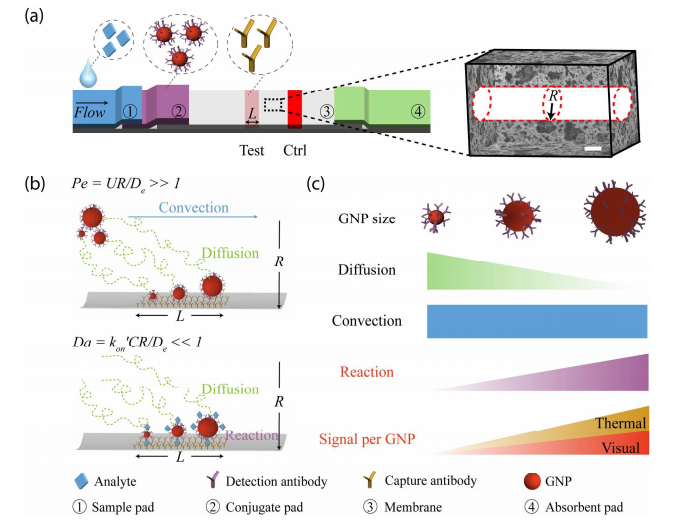Recently, Ph.D. student Yan Gong
from BEBC, cooperated with Professor John C. Bischof from the University of
Minnesota, published a research paper entitled " The role of nanoparticle design in determining
analytical performance of lateral flow immunoassays " on Nano letters.

In this paper, a rational and systematic strategy is used to design
the LFA contrast label (i.e. gold nanoparticle) to improve the analytical sensitivity,
analytical detection range and antigen quantification of LFAs. Specifically, they
discovered that the size (30, 60 or 100 nm) of the gold nanoparticle is a main
contributor to the LFA analytical performance through both the degree of
receptor interaction and the ultimate visual or thermal contrast signals. Using
the optimal LFA design, they demonstrated the ability to improve the analytical
sensitivity by 256-fold and expand analytical detection range from 3 log10 to 6 log10 for diagnosing patients with inflammatory conditions by
measuring C-reactive protein. This work demonstrates that with appropriate
design of the contrast label, a simple and commonly used diagnostic technology
can compete with more expensive state-of-the-art laboratory tests.
The work is under the guidance of Professor Feng Xu. The co-authors of the paper include Li Zhan, Shuang Zhuang Guo, Fayi
Song, David R. Boulware, Michael C. McAlpine, Warren C.W. Chan, and John C
Bischof.
Link of the artical:http://pubs.acs.org/doi/pdf/10.1021/acs.nanolett.7b02302